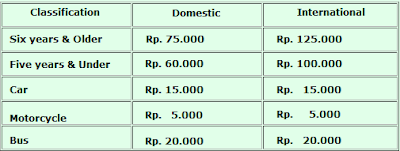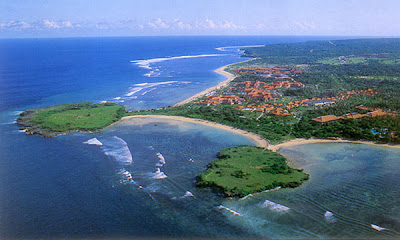 The Wakatobi National Park (WNP) marine protected area (13,900 km2) was formed in 1996, and includes the atolls and islands of the Tukang Besi Archipelago. The support for the formation of WNP was based on the park’s position in the centre of the Wallacea Region — a biodiversity ”hot spot”2,3,4, and the relatively low level of subsistence and commercial fishing on the 50,000 ha of coral reef within the park. Since its wellintended start, WNP languished as a paper park, suffering from a lack of funding, continued destructive fishing practices, and complacent park rangers and management (Elliott et al. 2001; Clifton 2003).
The Wakatobi National Park (WNP) marine protected area (13,900 km2) was formed in 1996, and includes the atolls and islands of the Tukang Besi Archipelago. The support for the formation of WNP was based on the park’s position in the centre of the Wallacea Region — a biodiversity ”hot spot”2,3,4, and the relatively low level of subsistence and commercial fishing on the 50,000 ha of coral reef within the park. Since its wellintended start, WNP languished as a paper park, suffering from a lack of funding, continued destructive fishing practices, and complacent park rangers and management (Elliott et al. 2001; Clifton 2003).Furthermore, there has been limited success in addressing the dipolar needs of expanding local resource use and centralised WNP management objectives. In 2003 a new Head of WNP was appointed and WNP was selected for the Indonesian government’s Coral Reef Rehabilitation and Management Program (COREMAP), which aims to develop co-management of reef fisheries in Indonesia. Since 2001, Operation Wallacea has examined various aspects of fisheries around Kaledupa, as part of volunteer programmes, and as ongoing monitoring studies. This work is being put forward as part of a fisheries co-management programme evolving from the WNP, COREMAP and TNC/WWF.
History and Culture
 Within WNP there are two socially-segregated ethnic groups: the Orang Bajo (Bajo People), who speak Bahasa Sama, and the Orang Palo (Island People), who speak Bahasa Pulo. Originally, the Bajo were sea nomads living on boats throughout the Malay Archipelago, whose livelihoods and culture were based on subsistence fishing (Djohani 1996; Sather 1997). The Palo are decedents of nearby ethnic Butonese and were predominantly land dwellers, practicing both fishing and farming. In addition the Palo have a strong maritime history as sea traders and pirates, possessing many large wooden sail boats called sopes (Schoorl 1986), which traditionally formed the bulk of the Sultan of Buton’s fleet.
Within WNP there are two socially-segregated ethnic groups: the Orang Bajo (Bajo People), who speak Bahasa Sama, and the Orang Palo (Island People), who speak Bahasa Pulo. Originally, the Bajo were sea nomads living on boats throughout the Malay Archipelago, whose livelihoods and culture were based on subsistence fishing (Djohani 1996; Sather 1997). The Palo are decedents of nearby ethnic Butonese and were predominantly land dwellers, practicing both fishing and farming. In addition the Palo have a strong maritime history as sea traders and pirates, possessing many large wooden sail boats called sopes (Schoorl 1986), which traditionally formed the bulk of the Sultan of Buton’s fleet.However, these seemingly unassociated ethnic groups appear to have cohabited the area, as flood stories
in both folk histories tell of a split in one people, the Bajo travelling far out to the sea and the Palo climbing the highest peaks.
Adventure And Diving
Bajo and Palo fish folk taxa were collected during creel and onboard surveys of all fishing techniques
 used on the reef flat, crest and wall in the waters around Kaledupa Island between 2001 and 2004. Fish names were re-corrected for misidentification and pronunciation initially, and where confusion arose, fishers were interviewed for clarification. All interviews were conducted in fishers’ respective languages with experienced interpreters.
used on the reef flat, crest and wall in the waters around Kaledupa Island between 2001 and 2004. Fish names were re-corrected for misidentification and pronunciation initially, and where confusion arose, fishers were interviewed for clarification. All interviews were conducted in fishers’ respective languages with experienced interpreters.During all interviews, folk taxa were checked using the illustrations in Allen (2000) and Lieske and Myers (1996), and photographs in Allen et al. (2003). If there was no general consensus for a species-specific folk taxon, only well known folk taxa for the generic groups were recorded. Most common English names were
taken from Allen (2000), as it was found to be very comprehensive for WNP, good for identification of most species, and easy to use for referencing. Etymological translations were obtained from local Bajo and Palo translators who worked closely on fisheries surveys between 2001 and 2004.
During creel and onboard surveys, 313 species of bony fish (dayahb: kentap)5 were recorded, for which
229 individual Bajo and 199 individual Palo folk taxa were identified (Appendix I). There were around 40 commonly caught species that most fishers could readily identify, beyond which identification became ambiguous. Consequently, the folk taxa displayed in Appendix I represent the collective knowledge of fishers, not the general ability of fishers to identify folk taxa, which improved with age and fishing experience.
 Generic group lexemes were defined as those identified by fishers to have an appreciated generic value, though not necessarily with a known translation. There are 53 and 54 generic group lexemes that represent 43% and 40% of the caught species in Bajo and Palo, respectively. A further 8% and 3%, respectively, of
Generic group lexemes were defined as those identified by fishers to have an appreciated generic value, though not necessarily with a known translation. There are 53 and 54 generic group lexemes that represent 43% and 40% of the caught species in Bajo and Palo, respectively. A further 8% and 3%, respectively, ofcaught species appeared to have generic values that were not identified by fishers. The use of speciesidentifying primary lexemes generally corresponds to species with clearly identifying features and does not appear to be related to locally desirable species.
However, identification of infrequently caught nontarget species (i.e. damsel fish), was not possible below generic groups, mostly because fishers’ appeared to have little interest in such species.

















































